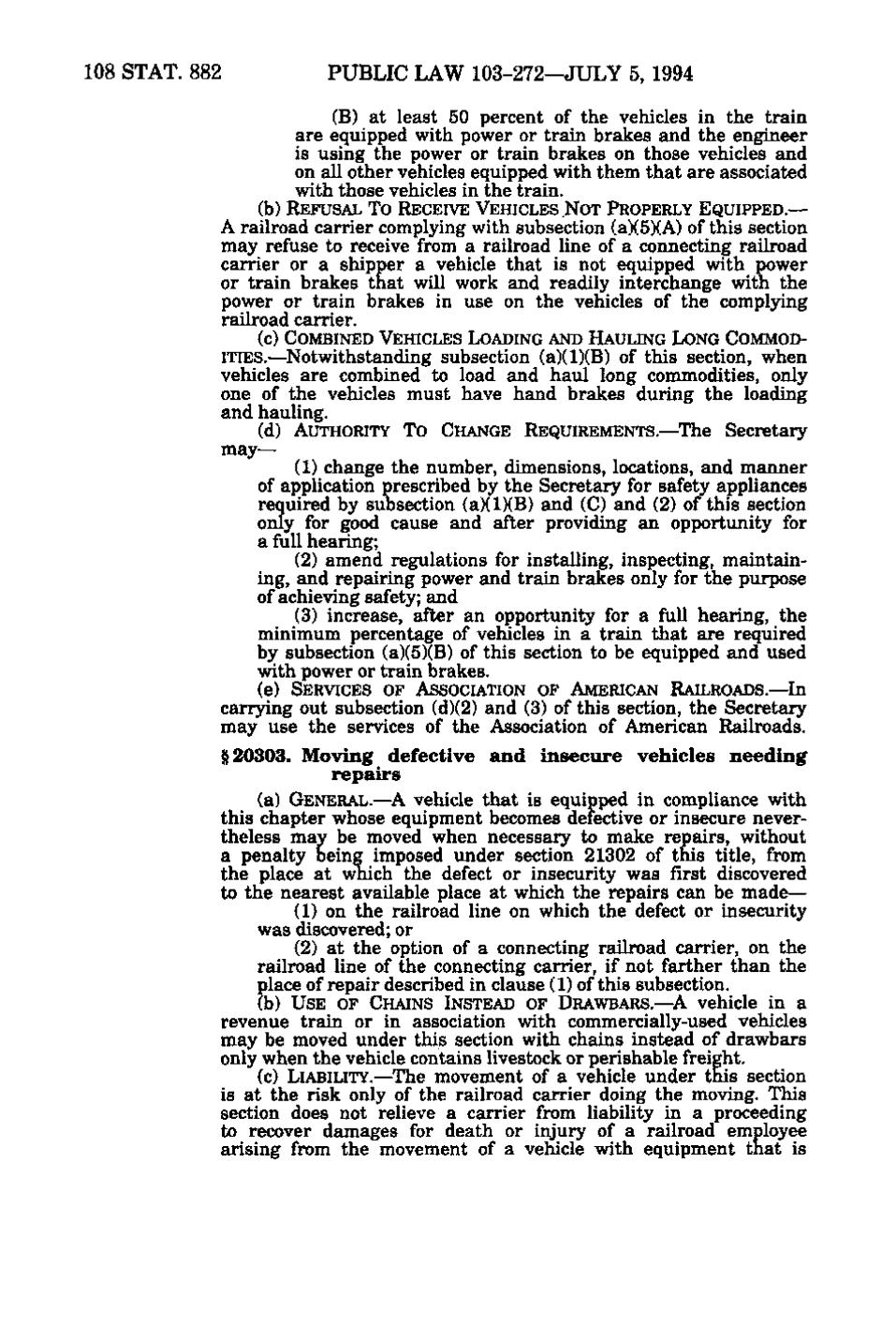108 STAT. 882 PUBLIC LAW 103-272—JULY 5, 1994 (B) at least 50 percent of the vehicles in the train are equipped with power or train brakes and the engineer is using the power or train brakes on those vehicles and on all other vehicles equipped with them that are associated with those vehicles in the train. (b) REFUSAL TO RECEIVE VEHICLES NOT PROPERLY EQUIPPED. — A railroad carrier complying with subsection (a)(5)(A) of this section may refuse to receive from a railroad line of a connecting railroad carrier or a shipper a vehicle that is not equipped with power or train brakes that will work and readily interchange with the power or train brakes in use on the vehicles of the complying railroad carrier. (c) COMBINED VEHICLES LOADING AND HAULING LONG COMMOD- ITIES. — Notwithstanding subsection (a)(1)(B) of this section, when vehicles are combined to load and haul long commodities, only one of the vehicles must have hand brakes during the loading and hauling. (d) AUTHORITY TO CHANGE REQUIREMENTS. —The Secretary may— (1) change the number, dimensions, locations, and manner of application prescribed by the Secretary for safety appliances required by subsection (a)(1)(B) and (C) and (2) of this section only for good cause and after providing an opportunity for a full hearing; (2) amend regulations for installing, inspecting, maintaining, and repairing power and train brakes only for the purpose of achieving safety; and (3) increase, after an opportunity for a full hearing, the minimum percentage of vehicles in a train that are required by subsection (a)(5)(B) of this section to be equipped and used with power or train brakes. (e) SERVICES OF ASSOCIATION OF AMERICAN RAILROADS.— In carrying out subsection (d)(2) and (3) of this section, the Secretary may use the services of the Association of American Railroads. §20303. Moving defective and insecure vehicles needing repairs (a) GENERAL,—^A vehicle that is equipped in compliance with this chapter whose equipment becomes defective or insecure nevertheless may be moved when necessary to make repairs, without a penalty being imposed under section 21302 of this title, from the place at which the defect or insecurity was first discovered to the nearest available place at which the repairs can be made— (1) on the railroad line on which the defect or insecurity was discovered; or (2) at the option of a connecting railroad carrier, on the railroad line of the connecting carrier, if not farther than the place of repair described in clause (1) of this subsection. (b) USE OF CHAINS INSTEAD OF DRAWBARS,—A vehicle in a revenue train or in association with commercially-used vehicles may be moved under this section with chains instead of drawbars only when the vehicle contains livestock or perishable freight. (c) LIABILITY. — The movement of a vehicle under this section is at the risk only of the railroad carrier doing the moving. This section does not relieve a carrier from liability in a proceeding to recover damages for death or injury of a railroad employee arising from the movement of a vehicle with equipment that is
�
